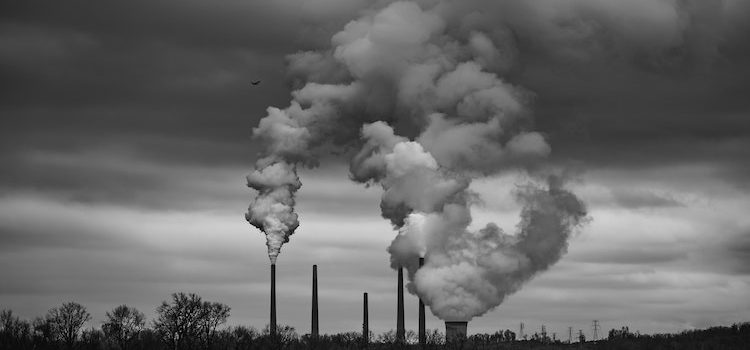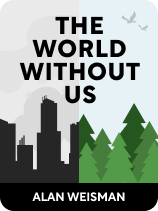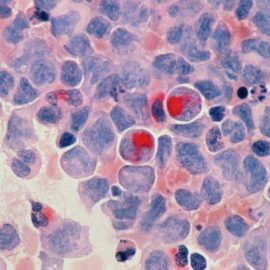

This article is an excerpt from the Shortform book guide to "The World Without Us" by Alan Weisman. Shortform has the world's best summaries and analyses of books you should be reading.
Like this article? Sign up for a free trial here.
How do human activities affect the environment? Which is more harmful—farms or cities? What’s the Great Pacific Garbage Patch?
The human race has left a mark on our planet, sometimes through carelessness and sometimes by design. In The World Without Us, science journalist Alan Weisman outlines several ways that humanity impacts the environment: agriculture, cities, power, waste, and pollution.
Keep reading to learn about the human ecological footprint.
How Human Activities Affect the Environment
How do human activities affect the environment? Weisman discusses the human ecological footprint as we’ve restructured the natural landscape to suit our own needs. Among these are how we’ve turned vast swaths of forest into farmland, how we’ve crisscrossed the world with cities and infrastructure to support our growing population, and how we’ve dealt (responsibly or otherwise) with the never-ending supply of waste that industrial civilization generates.
Agriculture
We truly began to reshape the world when we first learned how to farm. Soil samples taken in Africa recount a history of agricultural deforestation reaching as far back as the Stone Age. Over 4,000 years ago, the forests of Europe were dealt a blow by farming, while 1,000 years ago the forests of central North America were cleared by the Mississippian culture to make way for the maize crops that supported their cities.
In the 1800s, farmers discovered that adding nitrogen and phosphate to the soil makes plants grow faster and larger. Unfortunately, it also reduces biodiversity. In the 20th century, farmers began using pesticides and added zinc and copper. The result is an increase in man-made chemicals that drain from farms into streams, ponds, and rivers. Once there, the fertilizers let weeds and algae bloom out of control, removing oxygen from the water so that fish and other species die out.
Some GMO crops can be highly invasive if their pollen and seeds get loose in the wild. Other GMO crops, if left untended, can die out and leave behind barren plots of soil that can take decades to recover.
Cities & Power
In most large cities, what greenery exists is largely in the form of invasive ornamental plants that don’t feed what native ecosystem is left. Instead, the city’s new ecosystem is dominated by species that rely on us (and our trash) to survive—rats, cockroaches, and the like.
Cities, towns, and modern farms all rely on electricity to function, connected by thousands of towers supporting millions of kilometers of power lines worldwide. Weisman says they’re a threat to many animal species, especially birds. With forests cleared for farms and cities, birds turn to electrical towers as places to perch and nest. The lights and magnetic fields around transmission towers confuse birds’ sense of navigation, and those with large wingspans such as eagles and condors are particularly vulnerable to electrocution. Some species’ numbers have fallen as much as two-thirds of their prior population.
Weisman explains that electricity isn’t the only concern. Nuclear power plants and petrochemical refineries work with highly volatile materials and require constant human supervision to maintain them and avoid catastrophic failures.
Waste & Pollution
Weisman discusses several forms of long-lasting waste that accumulate and persist as a result of our modern lifestyles, including plastic, airborne chemicals, and radioactive material.
A great deal of plastic washes out to sea, where it collects in enormous oceanic regions such as the Great Pacific Garbage Patch. Weisman says the problem is that plastic doesn’t truly degrade. Plastic has been found clogging the digestive tracts of countless sea creatures and birds, and smaller plastic particles can be ingested and kill creatures even further down the food chain.
The primary contaminant that people are concerned with today is simple carbon dioxide, the driving contributor to global warming and climate change, but it’s not the only one of concern. Even though the production of CFCs has been widely curtailed, and the damage to the ozone layer has slowed, there are still vast amounts of CFCs still in use or in landfills, waiting to leak into the atmosphere.
Weisman argues that the deadliest byproduct of the modern era is our growing stock of radioactive waste and the difficulty of safely storing it so that nature and future generations are protected.

———End of Preview———
Like what you just read? Read the rest of the world's best book summary and analysis of Alan Weisman's "The World Without Us" at Shortform.
Here's what you'll find in our full The World Without Us summary:
- What would happen to Earth if the human race disappeared
- How the planet would benefit from a human extinction
- What the immediate vs. long-term effects would look like






